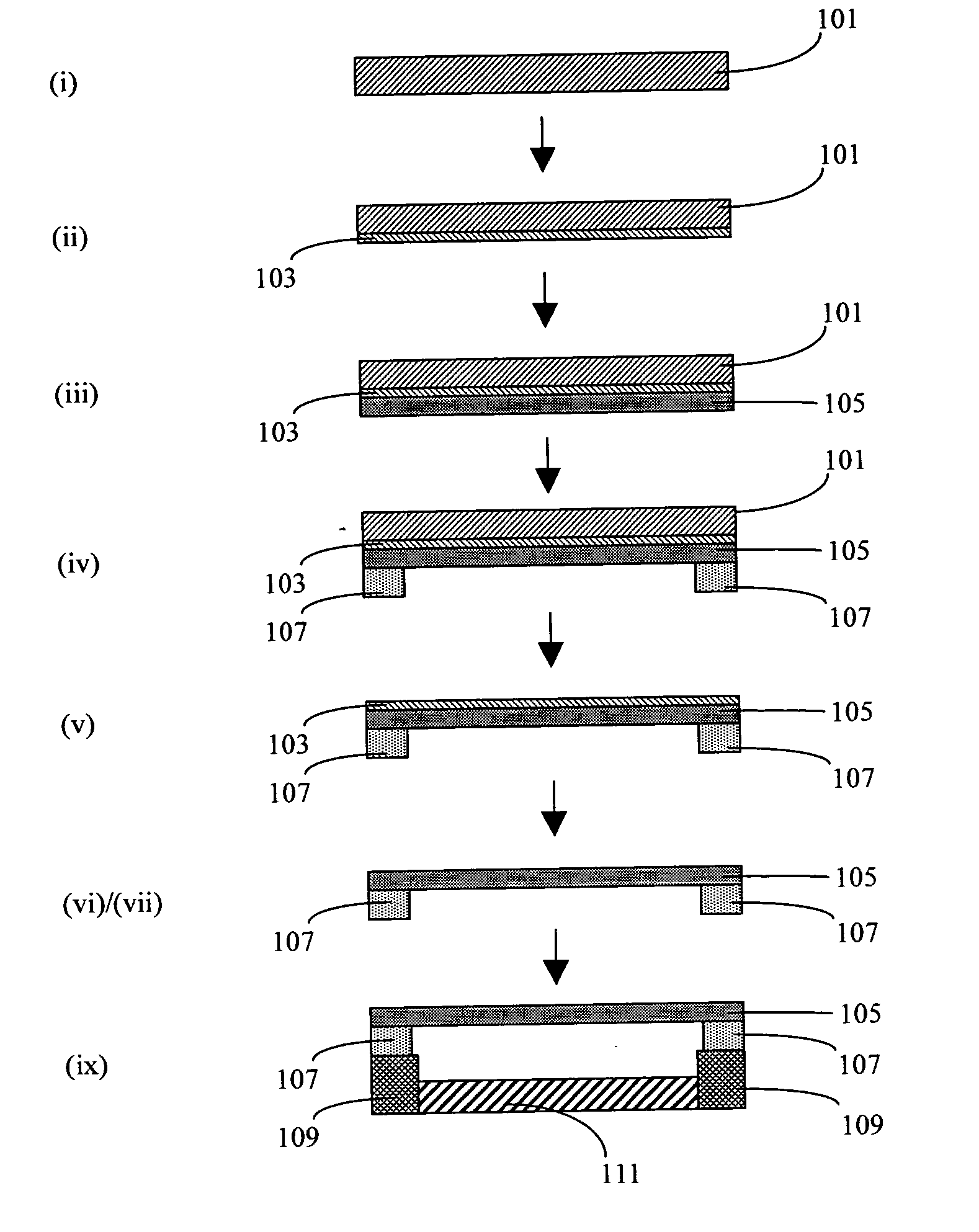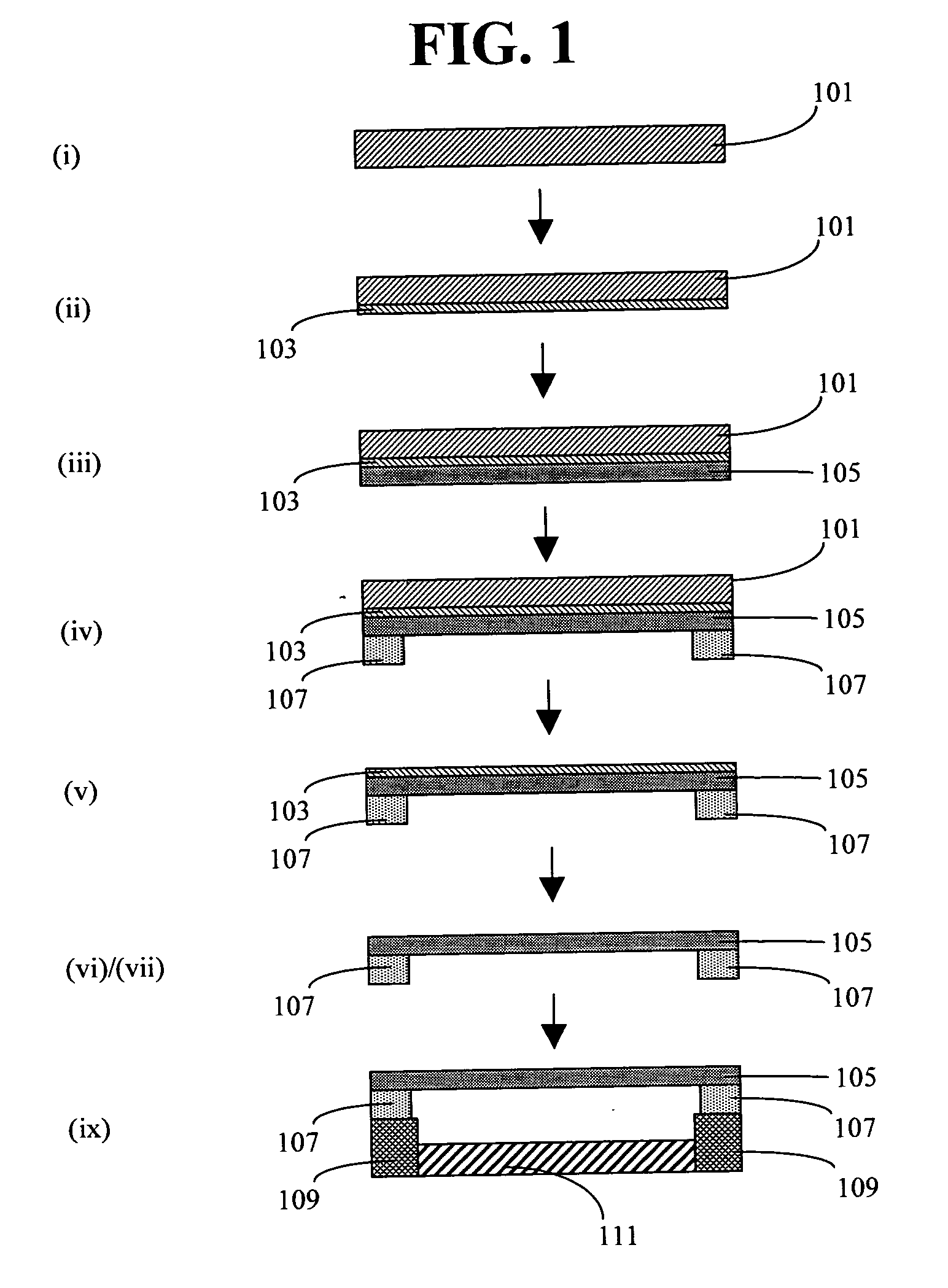Hard pellicle and fabrication thereof
- Summary
- Abstract
- Description
- Claims
- Application Information
AI Technical Summary
Benefits of technology
Problems solved by technology
Method used
Image
Examples
Embodiment Construction
[0035] Pellicles serve as dust covers of reticles and protect the increasingly more expensive reticles from being contaminated in the lithographic process. Usually, a pellicle is an assembly comprising a thin pellicle layer mounted to a pellicle mount frame. Because the pellicle layer has a thin thickness compared to a relatively large surface area, the layer is sometimes called a membrane or a film. Typically, the pellicle layer has been made by stretching a thin (˜0.8 μm) polymer layer over an aluminum frame. As discussed above, this approach does not appear viable for 157 nm and shorter wavelength applications because the polymers rapidly degrade under the exposure of these wavelengths. An alternative was proposed by SEMATECH to use a hard pellicle comprised of silica or doped silica. Because silica has a higher modulus and density than polymer layers, initial efforts have focused on very thick (300-800 μm) silica plates to avoid sag, which causes wavefront distortion. The leadin...
PUM
| Property | Measurement | Unit |
|---|---|---|
| Thickness | aaaaa | aaaaa |
| Temperature | aaaaa | aaaaa |
| Stress optical coefficient | aaaaa | aaaaa |
Abstract
Description
Claims
Application Information
 Login to View More
Login to View More - R&D
- Intellectual Property
- Life Sciences
- Materials
- Tech Scout
- Unparalleled Data Quality
- Higher Quality Content
- 60% Fewer Hallucinations
Browse by: Latest US Patents, China's latest patents, Technical Efficacy Thesaurus, Application Domain, Technology Topic, Popular Technical Reports.
© 2025 PatSnap. All rights reserved.Legal|Privacy policy|Modern Slavery Act Transparency Statement|Sitemap|About US| Contact US: help@patsnap.com


